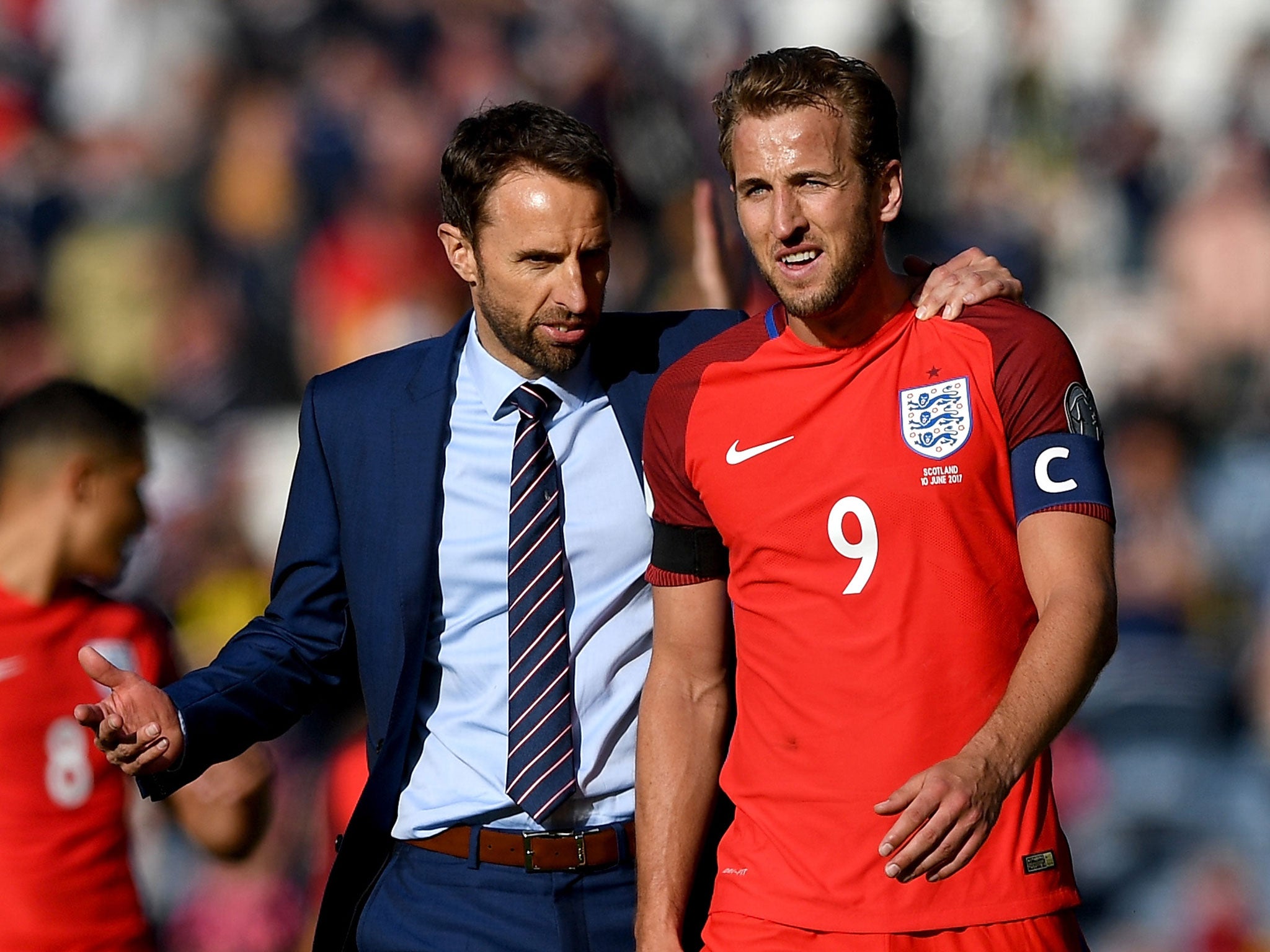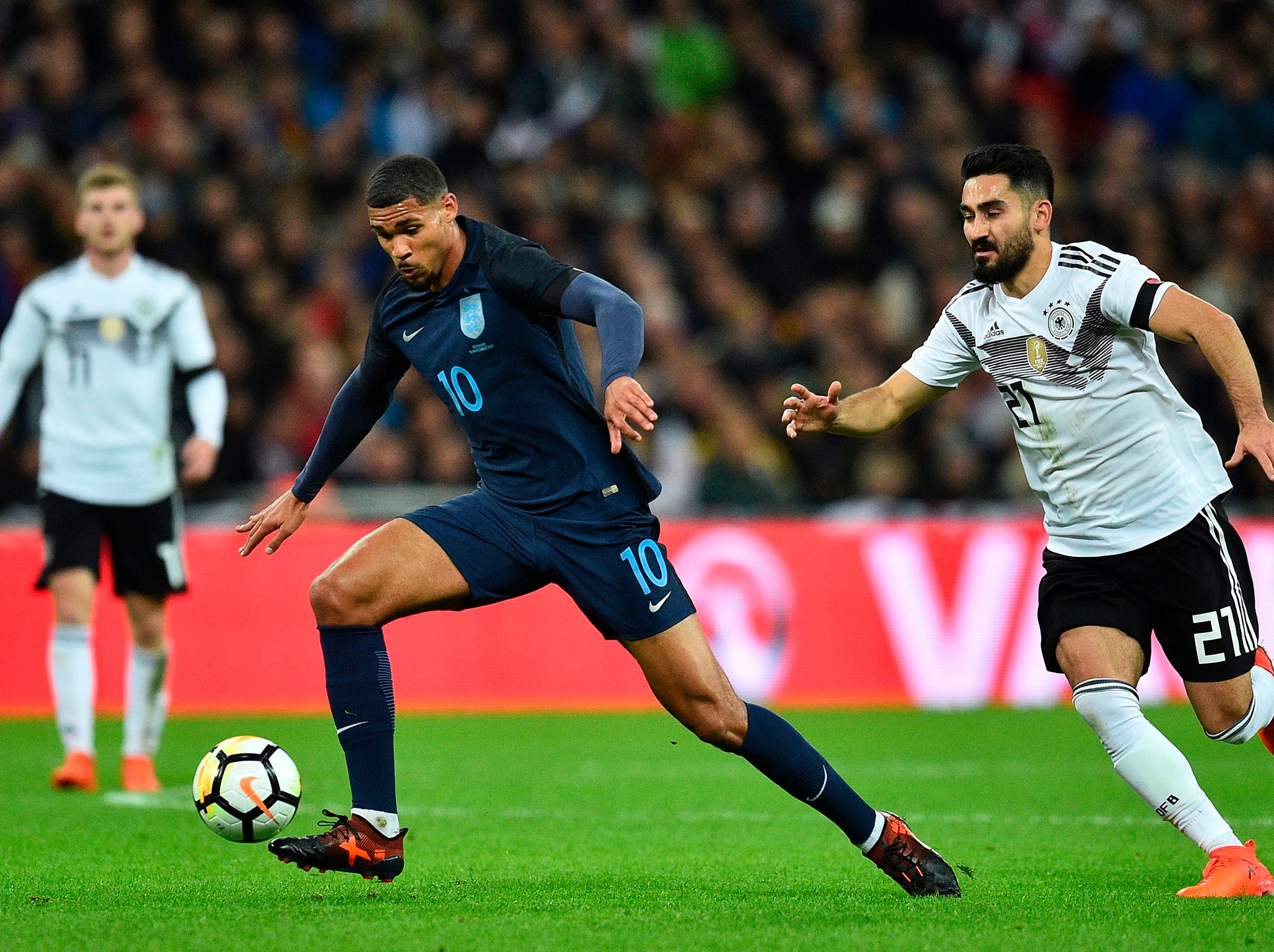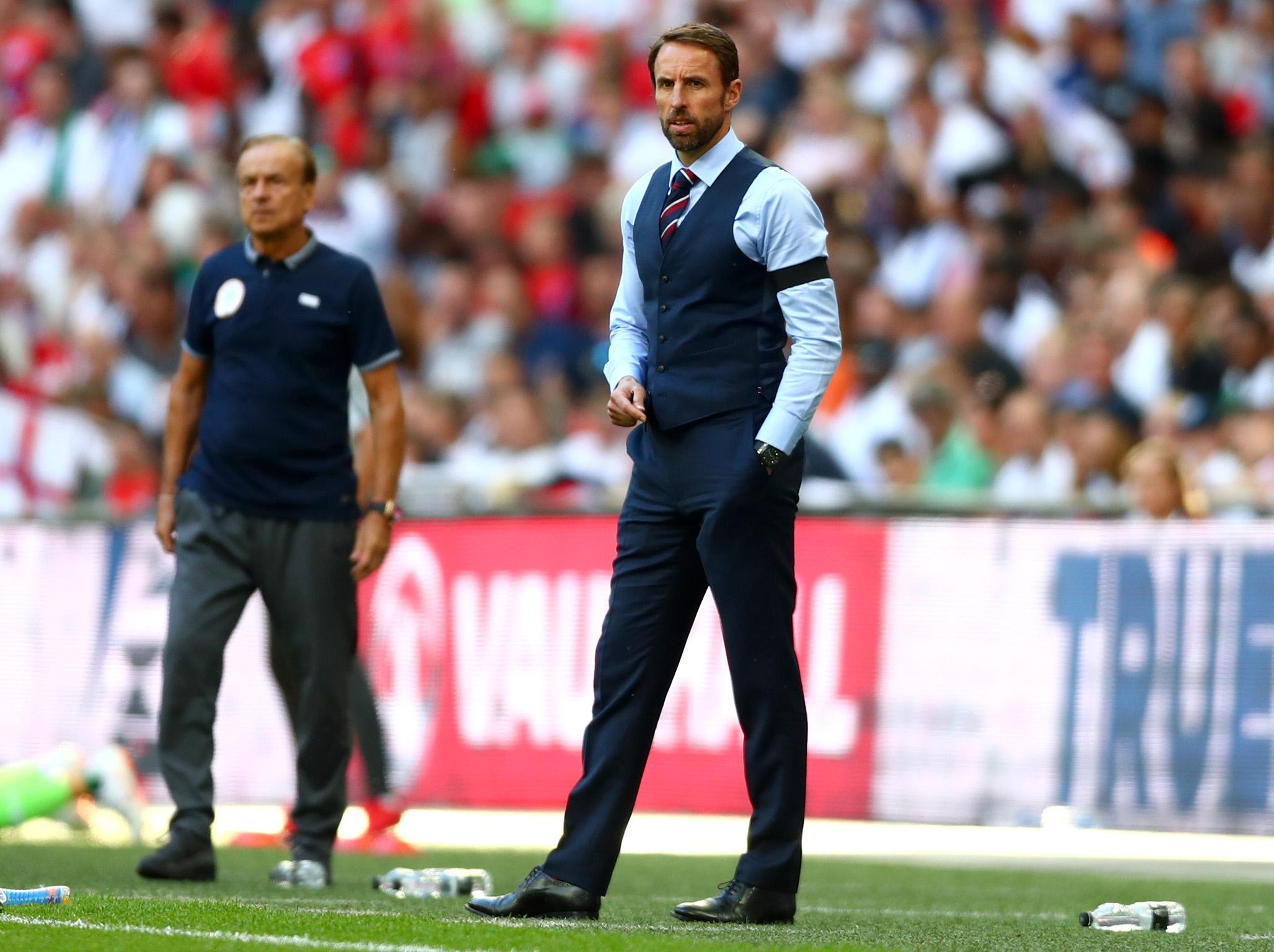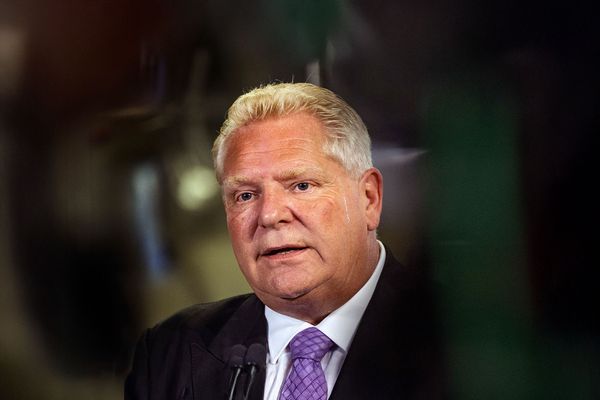Here we go then. Deep breath: England are heading to a major tournament looking entirely competent.
We’ve been here before, of course. Last time it ended with a thud and a thunder clap, but an awful lot has changed since Euro 2016. At the start of the road to Russia, Wayne Rooney was in midfield, Daniel Sturridge was up front and Trent Alexander-Arnold was still just a smattering of first names to most of us. That is the reality of beginning qualification two years early: the team sheds and regenerates along the way.
Since Gareth Southgate took over England have played 18 matches, winning 10, drawing six and losing two. There are some reasons to be pessimistic, like the fact England have played all of the big four – Spain, Brazil, France and Germany twice – and haven’t beaten any of them. But then again they won their group comfortably, and now carry an uncanny resemblance to a team with cohesion.
Now the preparation is over and the tournament is nearly upon us, here is a detailed look at how and why Southgate has shaped his England team in the way he has, and what we can expect in Russia.
How Southgate’s team evolved through qualifying
England began qualification in a rough 4-3-3/4-5-1 formation and quickly switched to more of a 4-2-3-1, but halfway through the campaign in June 2017, two matches changed Southgate’s thinking.
The first was a qualifier against Scotland. England drew 2-2 at Hampden Park thanks to Harry Kane’s late equaliser (something which solidified his position as the team’s natural captain). But the manager was unimpressed by England’s play out from the back and was particularly disappointed with Chris Smalling on the ball, so he made a decision to abandon both the United defender and the back-four system.
In the following game, a friendly against France, Southgate started with three at the back. He had already experimented with it a few months earlier in a 1-0 loss to Germany in Dortmund, and although England also lost in Paris and were carved open several times in the 3-2 defeat, the team were more effective moving the ball from back to front than against Scotland.
It was notable that afterwards Southgate went out of his way to praise the movement in England’s opening goal, when wing-back Ryan Bertrand burst into the box to supply Kane. In the summer that followed he sat down with his assistant Steve Holland and decided that wing-backs best suited the profile of the squad. He later detailed how playing this way also provides “more passing options” than a flat back four.
Southgate still persisted with the more accustomed 4-2-3-1 through qualifiers against Malta and Slovakia when the squad regrouped in September, but took the chance to switch to 3-4-2-1 at the end of the Slovenia game in October once qualification looked to be sealed as he sought to test his new plan.

Then came the final qualification match, a dead rubber in Lithuania which drew viewing figures of approximately no one but which in hindsight offered plenty of insight into Southgate’s thinking. He used the match to test personnel in his three-at-the-back system – John Stones in the centre, Harry Maguire on the left and Kieran Trippier at right wing-back. He was also impressed by Harry Winks and Michael Keane, although they would go on to miss the World Cup after loss of fitness and form respectively.
After beating Lithuania, Southgate revealed England would be using a back three at the World Cup, saying it gave the players a dependable base to work from.
“We have to have some consistency in formation, some consistency in what we are asking the players to do,” he said. “We have to focus on a system and really try to hone it, work on it, improve it, and that might mean we have to leave some good players out. You have such little time to work with the players that the more clarity they have under pressure, then they will know what to fall back on. It will help to switch between two systems, but for me they would both be with three at the back.”
After 3-4-2-1, the second of those two systems was a 3-5-2 (or 3-5-1-1) formation which Southgate deployed in the final 20 minutes in Lithuania. He has used it almost exclusively ever since.

What we learned from six friendlies before Russia
England have played six friendlies since qualifying for the World Cup: three mildly entertaining draws against Germany, Brazil and Italy, and three gently uplifting wins over Holland, Nigeria and Costa Rica.
Playing in Southgate’s 3-5-2 formation, England have looked more assured than when they switched to a back three in the June 2017 defeat against France. The squad began to take shape: Jordan Pickford and Ruben Loftus-Cheek impressed on debuts against Germany while Harry Maguire was singled out for particular praise.
After the Germany draw, Southgate elaborated on his formation switch. He criticised the “positional discipline” his team had shown in the 4-2-3-1 deployed in qualifying, and said that the 3-5-2 was preferable to 3-4-2-1 because the three central midfield roles “opened up possibilities”: he said the two attacking midfield roles either side of the pivot, which he called “the No 8s”, could be filled by any number of players such as Adam Lallana, Dele Alli, Loftus-Cheek, Jordan Henderson and more. The malleability of those roles gave Southgate the chance to recalibrate his team without changing the overall system.

The March friendlies were also revealing, when England beat Holland 1-0 and drew with Italy 1-1. Eric Dier and Henderson shared holding role responsibilities across the two games suggesting they would not be paired in Russia, but more interesting was the decision to move Walker into the back three.
Southgate gave four reasons: he wanted good technical players in the wide centre-back berths to carry a threat, as Cesar Azpilicueta does so well for Chelsea; he felt Walker already impressed in similar inside zones under Pep Guardiola; Walker had an existing relationship with Stones at club level; playing Walker at centre-back would mean having to take one less out-and-out centre-half on the plane. With Stones and Maguire already bedded in, a back three was now taking shape.
Then came the two most recent games, against Nigeria and on Thursday night against Costa Rica, both played since the World Cup squad was announced. They were opportunities to further establish the 3-5-2 formation and for players to push their starting claims. Danny Rose seems to have edged ahead of Ashley Young at left wing-back; Marcus Rashford and Fabian Delph impressed; Pickford’s composure on the ball has helped him win the race to start against Tunisia. It has been a long road since Southgate’s first game against Malta in 2016, but he now he has his team, playing his way.

How will Southgate deploy his team at the World Cup – and will it work?
Asked before Thursday night’s friendly over Costa Rica whether the team had trained with any other systems, Southgate gave a firm “no”. He is unlikely to deviate from his two embedded formations: 3-4-2-1 and 3-5-2, and the latter will almost certainly begin the tournament.
Southgate has been working with the FA for several years, absorbing Dan Ashworth’s ‘England DNA’ ever since he began managing the Under-21s. The FA is adamant he will be given time to build and that this is the start of longer journey as he implements the England Way, which appears to be a gentle lean towards more technical, less direct football.
Southgate has repeatedly used words like “potential” to describe England, the team with the lowest combined average age and caps of any squad at the World Cup. He regularly points to the damning statistic that England have won only three knockout games at major tournaments in the past 25 years (by comparison, Germany have won 23). Russia is the first step in a longer project which Southgate hopes to helm. Avoiding a humiliating defeat will be an improvement on Euro 2016, and he has been careful not to demand a deep run in the competition.
Yet however hard he tries, there is a sense that he is building something. Sturridge described the squad as “more relaxed” after Southgate’s first game, and that description has cropped up on plenty of occasions since. It is said before most tournaments, but this time there does seem to be a unity in the England camp, a calm focus, an overwhelming sense that the players both know and enjoy what they’re doing.
On to Russia. Deep breath.
Predicted team against Tunisia: Pickford; Walker, Stones, Maguire; Tripper, Lingard, Henderson, Alli, Rose; Sterling, Kane.







